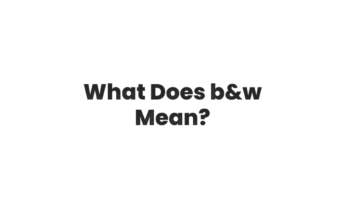Social software has been uncovering — and filling — the gaps in corporate communication and collaboration, even filling them before the enterprise can fully appreciate and deal with the changes taking place, says a brand new study released this week from user-experience research firm Nielsen Norman Group.
Of particular interest, the report also found that many of the most successful social media initiatives on company intranets (also referred to as Enterprise 2.0) start as unsanctioned, grassroots efforts led by front-line workers, and which later are officially recognized and approved by the business.
“Underground adoption of off-the-shelf Web 2.0 tools might seem out of character in the enterprise, but users see the value of these tools and are more often than executives able to translate that value to an internal use,” says famed usability expert Jakob Nielsen and coiner of Jakob’s Law. “Social software is a trend that cannot be ignored. It is bringing about fundamental change to the way people expect to communicate with one another. Companies cannot use social tools with their customers and not also allow their employees to utilize them.”

Jakob Nielsen
For the research effort, the Nielsen Norman Group gathered together and analyzed case studies from 14 companies in six countries to determine how organizations use social computing on their intranets. The companies included in the research and findings were Agilent Technologies, Johnson & Johnson Pharmaceutical Research and Development, IBM, Telecom New Zealand Limited and Sun Microsystems. These case studies were supplemented by information from companies that preferred to remain anonymous.
The central findings in the study, entitled Enterprise 2.0: Social Software on Intranets include:
- Underground efforts yield big results – Companies are turning a blind eye to underground social software efforts until they prove their worth, after which they integrate them more thoroughly.
- Front line workers are driving the vision – Many senior managers still consider social tools something their teenagers use. Young workers, who do not need to be taught or convinced to use these tools, expect them in the workplace.
- The business need is the big driver – Social software is not about the tools, it is about what the tools enable the users to do and about the business problems the tools address.
- Communities are self-policing – When left to their own devices, communities within enterprise intranets police themselves. Workers tend to retain their professional identities, leaving little need for the organization to institute controls.
- Organizations must cede power – As companies have been learning from using Web 2.0 technologies to communicate with their customers, they can no longer fully control their message. This is true, too, when Web 2.0 tools are used in internal communications.
The report also identifies broad changes in the way that workers engage with each other in the workplace: “Web 2.0 has transformed the way users communicate, share and collaborate online, and while this revolution has taken place outside the enterprise, it has a direct impact inside the firewall,” said the Nielsen Norman Group’s Patty Caya. “As social tools begin to shape workers’ expectations for how they get things done, it raises expectations for how they collaborate and communicate and participate in content development. The social Web has turned consumers into producers and this will impact how they work.”
Based on their findings, the Nielsen Norman Group estimates a timeline of approximately three to five years for most organizations to successfully adopt and integrate social technologies into their intranets. They also suggest that the political and cultural changes needed for its useful and widespread use may take longer.
The Nielsen Norman Group’s research findings and recommendations for implementing social features on enterprise intranets, as well as detailed case studies, are presented in a 168-page report, Enterprise 2.0: Social Software on Intranets: A Report From the Front Lines of Enterprise Social Software Projects, co-authored by Patty Caya and Jakob Nielsen.






